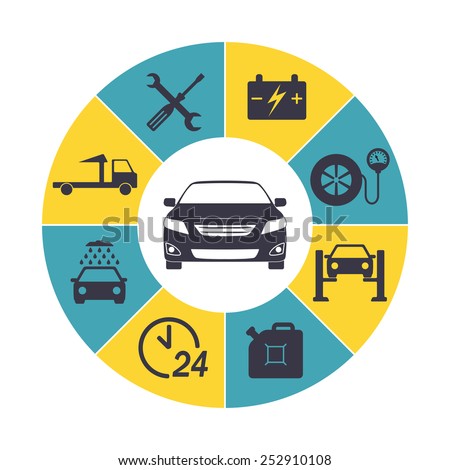Interpreting Your Automobile'S Alert Lights: Their True Ramifications
Interpreting Your Automobile'S Alert Lights: Their True Ramifications
Blog Article
Material Created By-Vinson Corbett
When you're behind the wheel, those beautiful warning lights on your dashboard can be a bit puzzling. Do you know what they're trying to tell you concerning your cars and truck's health and wellness? Recognizing the importance of these lights is important for your safety and security and the long life of your automobile. So, the next time one of those lights pops up, wouldn't you intend to understand its message precisely and take the necessary steps to resolve it?
Common Caution Lighting and Interpretations
Recognize typical warning lights in your auto and understand their meanings to guarantee secure driving.
Click In this article of the most normal caution lights include the check engine light, which indicates concerns with the engine or discharges system. If this light comes on, it's essential to have your car inspected promptly.
The oil pressure warning light suggests low oil stress, needing prompt focus to avoid engine damages.
A flashing battery light could suggest a defective billing system, possibly leaving you stranded otherwise resolved.
The tire stress monitoring system (TPMS) light notifies you to low tire stress, influencing car stability and fuel effectiveness. Disregarding this might cause risky driving problems.
The abdominal light shows a trouble with the anti-lock braking system, compromising your ability to quit rapidly in emergency situations.
https://laist.com/news/transportation/going-electric-california-car-mandate-would-hit-mechanics-hard but not least, the coolant temperature cautioning light warns of engine overheating, which can cause extreme damages if not dealt with swiftly.
Recognizing these usual caution lights will certainly aid you deal with concerns immediately and keep safe driving conditions.
Importance of Prompt Interest
Recognizing the typical caution lights in your car is just the primary step; the significance of promptly addressing these warnings can't be stressed sufficient to guarantee your safety when traveling.
When a warning light illuminates on your control panel, it's your cars and truck's way of communicating a potential problem that requires attention. Neglecting these warnings can cause much more serious troubles down the road, compromising your security and potentially costing you more in repairs.
Motivate interest to cautioning lights can stop breakdowns and mishaps. As an example, a flashing check engine light could show a misfire that, if left ignored, could cause damages to the catalytic converter. Addressing this quickly can save you from an expensive repair.
Likewise, a brake system warning light may signify low brake liquid or worn brake pads, critical parts for your security when driving.
DIY Troubleshooting Tips
If you observe a warning light on your dashboard, there are a few DIY repairing suggestions you can attempt prior to looking for expert aid.
The initial step is to consult your car's handbook to understand what the certain caution light suggests. In some cases the problem can be as easy as a loosened gas cap setting off the check engine light. Tightening up the gas cap may settle the trouble.
One more typical problem is a low battery, which can set off different warning lights. Checking the battery links for corrosion and ensuring they're protected may deal with the trouble.
If a caution light persists, you can attempt resetting it by disconnecting the cars and truck's battery for a few minutes and then reconnecting it. Furthermore, checking your automobile's fluid levels, such as oil, coolant, and brake liquid, can aid troubleshoot cautioning lights connected to these systems.
mobilecardetailingvanforsale
In conclusion, recognizing your automobile's caution lights is important for maintaining your vehicle running smoothly and securely. By promptly attending to these alerts and recognizing what they suggest, you can avoid expensive repair services and possible breakdowns.
Bear in mind to consult your auto's guidebook for particular details on each alerting light and do something about it appropriately to make certain a trouble-free driving experience.
Stay informed, stay safe when driving!
